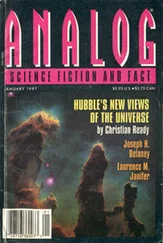Laszlo Krasznahorkai - Seiobo There Below
Здесь есть возможность читать онлайн «Laszlo Krasznahorkai - Seiobo There Below» весь текст электронной книги совершенно бесплатно (целиком полную версию без сокращений). В некоторых случаях можно слушать аудио, скачать через торрент в формате fb2 и присутствует краткое содержание. Год выпуска: 2013, ISBN: 2013, Издательство: New Directions, Жанр: Современная проза, на английском языке. Описание произведения, (предисловие) а так же отзывы посетителей доступны на портале библиотеки ЛибКат.
- Название:Seiobo There Below
- Автор:
- Издательство:New Directions
- Жанр:
- Год:2013
- ISBN:978-0811219679
- Рейтинг книги:4 / 5. Голосов: 1
-
Избранное:Добавить в избранное
- Отзывы:
-
Ваша оценка:
- 80
- 1
- 2
- 3
- 4
- 5
Seiobo There Below: краткое содержание, описание и аннотация
Предлагаем к чтению аннотацию, описание, краткое содержание или предисловие (зависит от того, что написал сам автор книги «Seiobo There Below»). Если вы не нашли необходимую информацию о книге — напишите в комментариях, мы постараемся отыскать её.
Seiobo — a Japanese goddess — has a peach tree in her garden that blossoms once every three thousand years: its fruit brings immortality. In
, we see her returning again and again to mortal realms, searching for a glimpse of perfection. Beauty, in Krasznahorkai’s new novel, reflects, however fleetingly, the sacred — even if we are mostly unable to bear it.
shows us an ancient Buddha being restored; Perugino managing his workshop; a Japanese Noh actor rehearsing; a fanatic of Baroque music lecturing a handful of old villagers; tourists intruding into the rituals of Japan’s most sacred shrine; a heron hunting.… Over these scenes and more — structured by the Fibonacci sequence — Seiobo hovers, watching it all.
Seiobo There Below — читать онлайн бесплатно полную книгу (весь текст) целиком
Ниже представлен текст книги, разбитый по страницам. Система сохранения места последней прочитанной страницы, позволяет с удобством читать онлайн бесплатно книгу «Seiobo There Below», без необходимости каждый раз заново искать на чём Вы остановились. Поставьте закладку, и сможете в любой момент перейти на страницу, на которой закончили чтение.
Интервал:
Закладка:
The administration must exceptionally and immediately — so that they hardly have time to look and see what is beneath the layers of cambric — create a description of the statue’s general state for the so-called Blue Dossier, they must create a description of practically everything they perceive about it, concerning the possibly most minute details, circumstances, and even impressions; following, however, the sequence specified by the Office of Cultural Properties so that even at the very first, they must provide an account of the material from which the work is created and its structure, the measurements within a hair’s breadth of accuracy, whether the traces of previous restoration work can be discerned, what specific damage has occurred, so as to formulate a plan for its later rectification, and finally what all of this will approximately cost; but then they have to give an account of the delivery process as well, which they simply take from the shared notations of the driver and the abbot of the Zengen-ji, while making note at the same time in what year, on what day, at what hour and at what minute they took possession of the statue, with what protective measures, from whom, and with what designated goal, then follows the notation of the year, month, day, hour, and minute of the unpacking of the crate, Master Fujimori is in his element, he knows this very well, this obligatory administrative sequence, so that his words come sputtering out — questions here, statements there — it all goes into the Blue Dossier, the work-book treated and venerated almost as much as if it were a sacred sūtra, for it is this, precisely this Blue Dossier, which — if, in agreement with a pre-designated schedule, a so-called supervisory inspection is carried out — the highly respected and even more powerful Office of Cultural Properties may examine as the single real evidence of the work that is taking place here, for certainly the Tokyo authorities do not, or at least hardly ever, have any encounter with the work itself; it is only through an acquaintance with the contents of the Blue Dossier that they can form an expert opinion as to what is going on here, if things are proceeding as they should, exclusively from the Blue Dossier, the significance of which is, accordingly, huge; and Master Fujimori knows this better than anyone else, it all depends on this, what is in the Blue Dossier, on what the special committee — they are methodical and of the highest authority — reads from the Blue Dossier; no wonder, then, if the description of the circumstances of the interventions taking place here are nearly laughable in their painstaking minuteness; Master Fujimori dictates, or asks questions; or he asks questions while making statements, or makes statements while asking questions, while the others — crouched and circled around him and the statue, now placed on the floor — very quickly nod, one after the other, in agreement, and mumble and approve, and always in chorus, as they are now, saying yes, absolutely, of course, the most serious traces of exterior damage are visible at first glance on the right side of the chest, on the throat, the arms, the back of the skull, in the figure’s lap, and on the statue’s base, that is true, they all say yes and firmly nod, the restorers in chorus; this must be noted down and this too is noted down in the Blue Dossier; and hours pass, however unbelievable it may seem, literally hours, until they have finished recording this administrative reception in the Blue Dossier, for the diagnosis must determine not only the symptoms but the presumed causes, it is almost noon already when the statue is carefully lifted up and placed onto the hydraulic table, and the restorers set about photographing the statue from every conceivable angle; this too will be part of the obligatory documentation: how the work of art appeared — in its entirety — when it was taken in for restoration; then the procedure is completed, the photographing, for safety’s sake a second camera is used as well, and then with the greatest caution they lift the statue down from the hydraulic table, and take it directly into the fumigation chamber, where the Amida Buddha receives his first so-called general defumigation, devised especially for such cases, for always or nearly always this is actually the first order of business, if a wooden statue is brought into the Bijutsu-in, if even merely for the protection of the hordes of national treasures already undergoing restoration here, because no one can recall even a single case in which damage by vermin was not a factor — at times decisive — in a statue’s material disintegration; insects and bacteria are always a factor, centuries have gone by here, most often the objects in need of rescue brought here date from the Edo or alternately the early Kamakura dynasty; since this is a rescue, it has to be gassed, and with that, after the Inspection, the Registration of the Current State, and the Photographic Documentation of the entire statue, the Operation proper begins, so that just as is mandated by the letter and the spirit of law no. 318 — the Act for the Protection of Cultural Goods introduced on December 24, 1951, and amended or supplemented every year or two up to the present day — give it strong methyl bromide, comes the command from Master Fujimori, when the statue is placed in the fumigation chamber, as it was clear even after the first examination that here, as in so many cases, they are faced with the so-called dry-rot insects of the Lyctidae, Bostrichidae, Anobiidae, and Cerambycidae families, and before anything it needs a good shower of gas, as the fumigation in the chamber is called, first the whole at once; then follows the procedure, in fact the most delicate part, in which they disassemble the Amida Buddha from the Zengen-ji into its minutest components on the hydraulic table, separating the tiniest possible parts from the rest, so that, disassembled pell-mell, the damage to the details thus exposed can be examined and determined, and at the same time specifying — collectively, always with the entire group of restorers, but of course under the supervision of the workshop’s master — the methods, materials, sequence, and timing of the repairs of the damage, always following the letter and the spirit of the law of December 24, 1951, that is to say, never losing sight of the fact that their task here in the Bijutstu-in is not the restoration of carefully guarded national treasures, but their material conservation, not RESTORATION but CONSERVATION; Master Fujimori takes this section of the law from 1951 so seriously that when he pronounces it, he essentially screams; his subordinates are convinced the reason why is that he fears this word; it is not our task to repair mistakes, Master Fujimori states, his voice, at such times, already rising, but rather to secure the current extant state, this is our task, and here he repeats it, he repeats it a few times, placing so much stress on every syllable that the syllables nearly falter in the stresses, just like the restorers themselves, and there lying strewn about all in pieces on the hydraulic table is Amida Buddha, as above their heads the just-shouted MATERIAL CONSERVATION fades away; they lean over the hydraulic table and everyone picks up one single piece, or in the more delicate cases, leans down very close to examine and decide what kind of damage has occurred here, and what should be done about it; that is to say, the wondrous gaze of the Amida Buddha lies in pieces on the hydraulic table, this is a very delicate point, and always is a very delicate point in the life of a restorer, an Amida Buddha so nicely laid out, just like this one from the Zengen-ji is now, nicely arranged on the large surface, so that it can all be nicely differentiated, nicely discernable in the photo documentation to come, and so where is that renowned gaze? — that is the sensitive question; to which of course Fujimori-san has an answer, namely that it is nowhere else, and nowhere else during the entire course of the restoration, but within the souls of the restorers; fine, comes their reply, because even if they can sense that, and they actually do sense there is something in their souls when they glimpse it for the first time, and the unquestionable respect felt in their souls does not cease during the entire course of the work up to its completion, but. . when the whole lies here in tiny pieces, it can hardly be said that the whole of it is there, that is to say the whole , gathered here in pieces isn’t there, only the pieces are there, and the whole isn’t anywhere, so that as always, there is a certain unease in the matter, as they complete the disassembly and the carefully separated parts are documented, that is, photographed from above by a camera mounted on tracks and therefore easily adjustable, on the upper floor, as well of course by employing the lifting mechanism of the hydraulic table, they take, that is, a full overview shot from above, clearly showing each individual piece, because in the Blue Dossier every individual component part has to be marked with the appropriate symbol and designated so that at the end — after reassembly — they will be able to demonstrate, with fresh photographic documentation as well as drawings of the internal structure, where the pieces have been, and what condition they are in; there is, accordingly, disquiet, some discomposure, in the soul, the place, in other words, where, according to Fujimori Seiichi, Amida Buddha would be; everything goes smoothly, restorers are not chatty people, they are used to silence, and even if a talkative sort happens to turn up among them, he too becomes used to no conversation after a year or two; the work, the entire process of taking apart the statue occurs in nearly total silence, and the same goes for the automated photographing of the statue from above; and then, the various disassembled components are carried again in small groupings into the gas chamber, and these groupings of components are given a second gas-shower, the intensity and quantity of which is measured specifically for them, respectively, until the various specialists begin to carry away the individual pieces to their own work tables, and until the specialized restoration of the individual components thus begins — up until this point, there is a touch of disquiet in their souls, if they happen to glance at each other, a mild discomposure; somehow, though, when Master Fujimori designates the specific tasks, it is obscured, and everyone can at last withdraw with their own piece of the statue to the worktable, because from that point on the only interest lies in the task at hand: to establish the extent of the fissures, the cracks, the internal structural damage caused by the borings of the vermin, the amount of paint that has peeled off, to decide — of course after having reached agreement with the Director of the workshop — what is the best course of action for the restor. . for the preservation of the statue, would it be more efficient to introduce the mugi-urushi or the various synthetic resins and emulsions by injection, or work them into the fissures of this or that smaller or larger cavity with a small thin-bladed knife; or should we now strip off the Edo-period veneer from the surface and retain the original Kamakura one; should we use funori or another kind of animal-based adhesive for gluing or keep the Edo-period glue and stabilize that; in a word, it has begun, and everything goes smoothly, and Master Fujimori — to the extent that his soul, tensed in continual readiness, permits at all — notes with a certain satisfaction that work has commenced, and that it is proceeding in its own order and way, life goes on in the Bijutsu-in, and of course more and more statues are brought, meaning that the attention of the workshop must be divided among various activities, but this does not in the least concern Master Fujimori, every statue that is brought here receives its own warranted attention, and the work proceeds in parallel, summer passes and then autumn, a mild winter coming in December, only January and February are unusually chill, the chill lasts a long time, they note at the end of one day or another as they step out from the Bijutsu-in building into the courtyard, once again winter has lasted too long, it wasn’t like this in the old times, they mutter to each other as a few set off, going part of the way together, toward bus number 206 or 208; in the old days not only were the magnolias already blooming in mid-February but the plum-trees as well, not to mention that at this time of year — in the old days — a jacket was sufficient and not a coat like today, somehow everything is going to the dogs, the restorers mutter to each other in the cold wind as they head toward the bus stop; if at such times some of them head out together after a typical day, no one is thinking that at the same time they are carrying, as they get into the bus and go home, according to the original consensus, the soul of the Amida Buddha in their own souls, which they then take home, give it something to eat for dinner, sit down with it in front of the TV, then lie down to rest with it and finally the next day bring it back to the Bijutsu-in, continuing their meticulous work on the section that has been entrusted to them; for example, the restorer with the magnifying glass strapped to his head, whose task it is to preserve and protect the carved hand making the gesture of “Mida no jōin,” thinks exactly that, and that is how he explains it to his seven-year-old son at home, of course the boy starts to make cheeky remarks and ask silly questions which are impossible to answer, so that the restorer grows annoyed, shoos the child away, and continues to work away industriously in the Bijutsu-in, so that the quality of the carved hand making the gesture of “Mida no jōin,” will be clearly discernible, because there is exactly where the problem lies: the borders of the fingertips touching each other, and the contours of the back of the hand, are completely blurred, so that you can hardly tell what mudra the hand is posed in; this is especially important in a statue of the Amida Buddha, Master Fujimori mentions on such occasions — three or four times a day — standing behind the back of the restorer, which is of course incredibly irritating, because he has to keep looking away from the magnifying glass in order to look back at the Workshop Director, and not only that, but keep nodding in agreement with the strap on his forehead, which can fall off at any moment, because for a while now he hasn’t been able to properly pull the strap tight enough; but still his situation is a happy one; it’s that young restorer, a certain Koinomi Shunzo, that Master Fujimori torments most of all, the one who has been entrusted with the restoration of the statue’s eyes, as one of the undoubtedly most talented — well, this Koinomi’s nerves can hardly hold up, in December, it is already plain to see that he cannot withstand the constant badgering, the continual supervision, the eternal reminders and anxiety-provoking remarks, and even more so, that Master Fujimori is somehow capable of moving around, of being in the workshop, in such a way that no matter where he is, he gives the impression that it is he, Koinomi, who is the perpetual focus of his attention: if he is by the gas chamber because he has something to do there at that moment, it’s as if he’s watching from there; if he is by the courtyard window, then from there; indeed, this Koinomi has the sense that if Fujimori-san goes out of the workshop to do something on the second or third floor, or if he goes over to the administrative manager of the Bijutsu-in, he still somehow leaves himself behind; Koinomi can hardly focus on his work, he continually blinks at the thick sliding door of the workshop, at the handle, waiting for it to turn in the next moment and the workshop head to return, that is to say that he cannot relax even if Fujimori leaves him to his work by going out for a bit, but only if Fujimori does not go out at all, because at least then he cannot delude himself by saying he isn’t here, at last he can breathe a sigh of relief, for the possibility that he can return at any moment is far worse than when he is here, strolling among them with his hands behind his back, so that it is this Koinomi who suffers the most, although he is completing his task — a born eye-specialist is what they call him — with extraordinary skill, and that is just what is so necessary, as everyone knows full well the significance of what will happen to the eyes of the Amida Buddha here in the workshop, because on the day of arrival, the renowned gaze, if examined up close, seemed just a little faded; the entire workshop expects a great deal from Koinomi, exactly what, would be difficult for them to formulate in words, but it is a lot, that’s what they even tell him as a form of encouragement, if he heads home with them on the way to the 206 or 208 bus stop, but in any case, not within earshot of the director of the workshop, that is to say they would never dare to risk allowing Master Fujimori to overhear such encouragement, because then it would somehow seem as if the workers of the atelier were openly defying him, whereas such defiance, especially openly, cannot be expressed; we’re not living in America, one colleague raises his voice at one point, definitely not, they all nod in agreement, not a word is spoken and everything remains as before, that is to say that on the one hand Koinomi’s colleagues all work on the basis of an anticipatory, encouraging trust, on the other hand among the eternally dissatisfied, critical, wounding, confidence-destroying, and degrading comments from the Workshop Director; just one thing is certain: one day, toward the end of February, when Koinomi states to the workshop that he’s finished and Fujimori immediately appears there behind him, ready to snarl, with a shake of his head, what impudence to say that one has finished, given such a task, it is he, Master Fujimori, who will decide if it is finished; the only problem is that when Master Fujimori stands behind the back of the young restorer and leans forward above his shoulder to examine the head and the two eyes, the words choke in his throat; the eyes, that is, really are finished, there can be no doubt to an expert, as Fujimori is himself, that his subordinate spoke correctly, the restoration of the two eyes is complete; it is, however, difficult to say exactly how this can be known, yet in any event, it is sufficient merely to look at the head of the Buddha affixed to Koinomi’s worktable, the diadems are still not screwed back into place, as someone else at another table is stabilizing their surface; it is enough to cast one glance to know perfectly that Koinomi is speaking the truth — the gaze is exactly what it should be, as it might have been originally in that year, sometime around 1367, when an unknown artist sought out by the Zengen-ji or recommended to them carved it; someone standing near the back formulates this thought in a muted voice when, at Koinomi’s announcement, everyone gathers around Koinomi and the workshop director: the gaze has “returned” and everyone is visibly in agreement; indeed, captivated, they stare at this gaze, this look that ascends from below the two half-closed eyes, the gaze of this looking, for these are experts, outstanding experts if not some of the most outstanding anywhere, they don’t need, for example to screw the diadems back onto the head, have no need to complete the painting of the face, i.e. the fixation of the former hues, to see that the gaze is finished, and with that too, they sense that the most decisive part of the restoration has been completed, and that is not so much of an exaggeration, because somehow after this, everything in the workshop speeds up, if it is the Zengen-ji Amida we are speaking of, all the parts end up back in place more quickly than before, the fastening and adhesive substances, largely prepared from urushi, are spread more rapidly onto the surfaces than before, and Master Fujimori states quite soon that the workshop is now ready to put all the disassembled components back together, so now the workers are already hurrying to the hydraulic table, already the red and saffron nails which will replace the rusted originals have been gathered up, and in the meantime they nearly forget to photograph the seperate, now restored components for the Blue Dossier — but only, of course, if Master Fujimori weren’t there, who of course is there for this occasion as well, keeping a keen eye on things and reminding the restorers of the necessary sequence of their work, repeating over and over in rebuking tones that to disregard law no. 318, the Act for the Protection of Cultural Goods, effective as of December 24, 1951, is not customary, as he terms it, in this institution — and so, in a word, the pieces are photographed one by one; then there comes at last the great day when the restored components are re-assembled, in the afternoon; the promised date of delivery is now drawing near when it is placed on the hydraulic table in its original radiance, and once again whole, the statue of Amida Buddha from the Zengen-ji, and its own gaze of unutterable strength, broadly scourging, sweeps across the entire staff of the Bijutsu-in, as if they had been struck by a windstorm, and even Fujimori Seiichi feels it, for the first time now he bends his head before the statue, lowering his eyes, for a time unable to withstand that tranquility — immense, ponderous, terrifying, and enigmatic — the likes of which here, even he, a workshop director at the Bijutsu-in, who has seen so much, has never yet encountered.
Читать дальшеИнтервал:
Закладка:
Похожие книги на «Seiobo There Below»
Представляем Вашему вниманию похожие книги на «Seiobo There Below» списком для выбора. Мы отобрали схожую по названию и смыслу литературу в надежде предоставить читателям больше вариантов отыскать новые, интересные, ещё непрочитанные произведения.
Обсуждение, отзывы о книге «Seiobo There Below» и просто собственные мнения читателей. Оставьте ваши комментарии, напишите, что Вы думаете о произведении, его смысле или главных героях. Укажите что конкретно понравилось, а что нет, и почему Вы так считаете.












